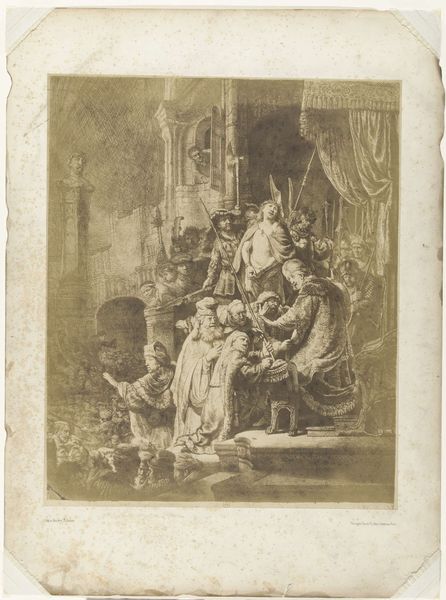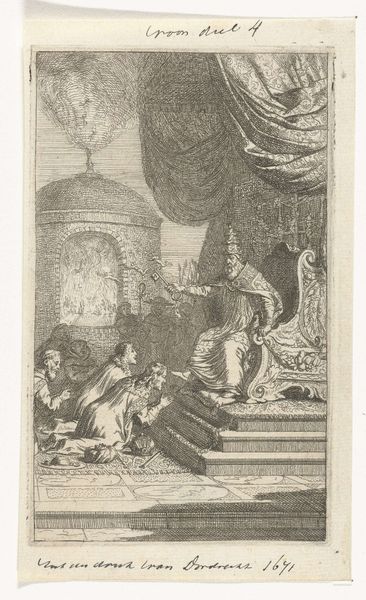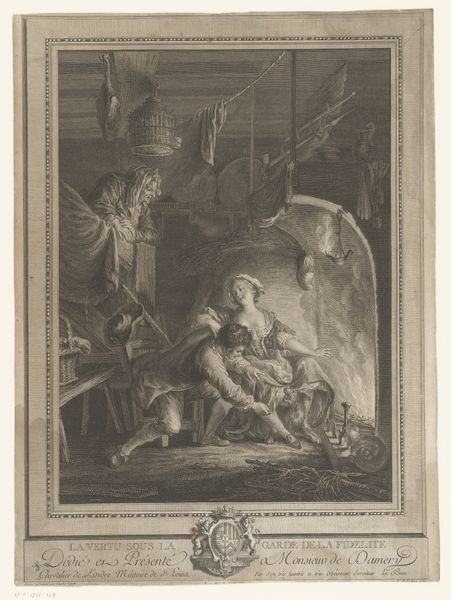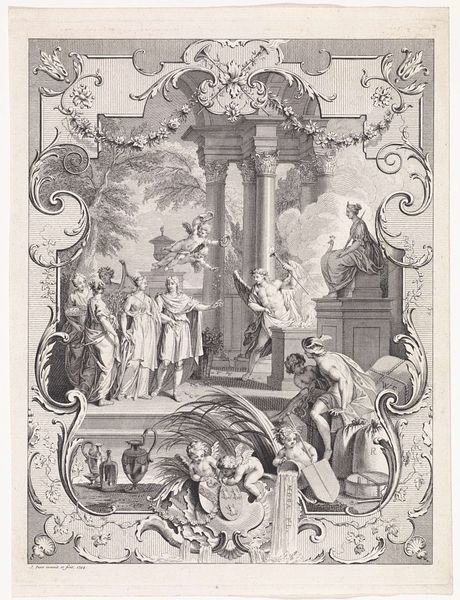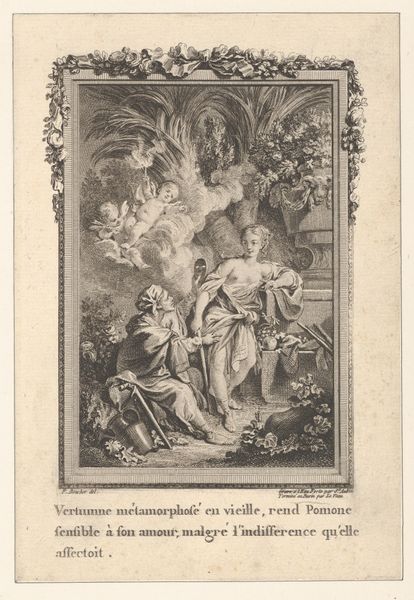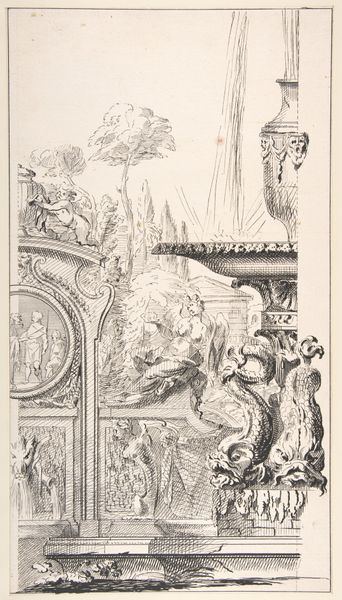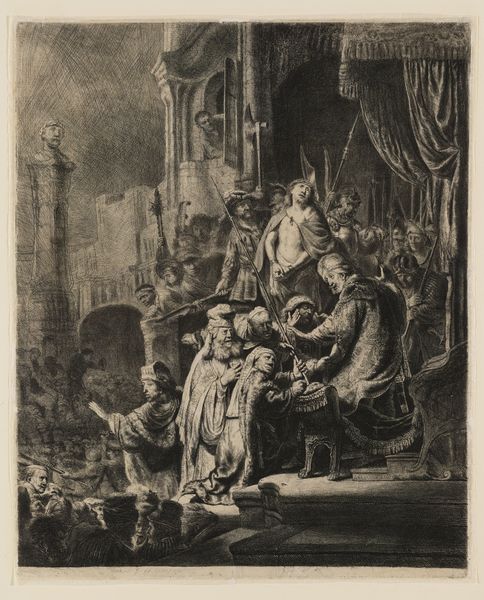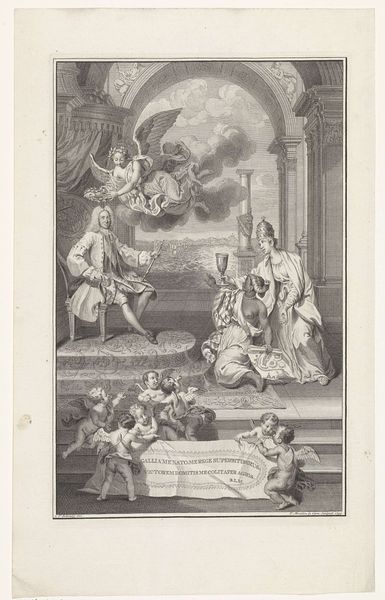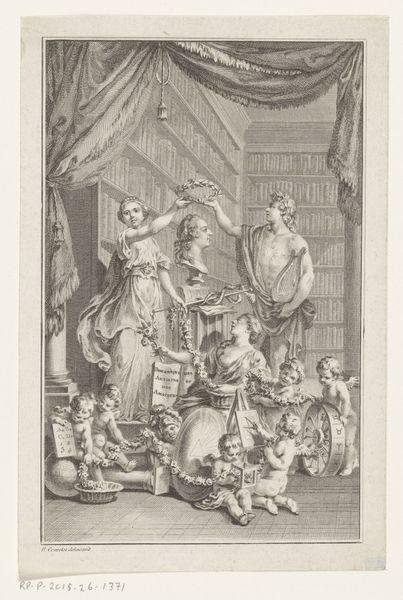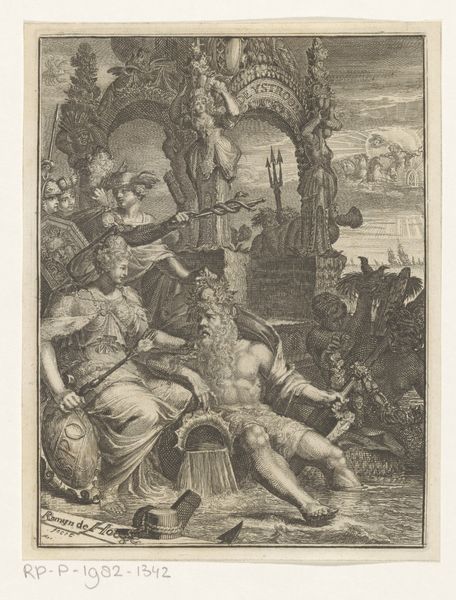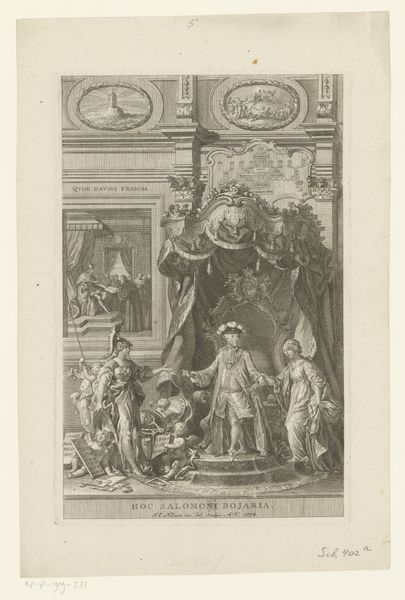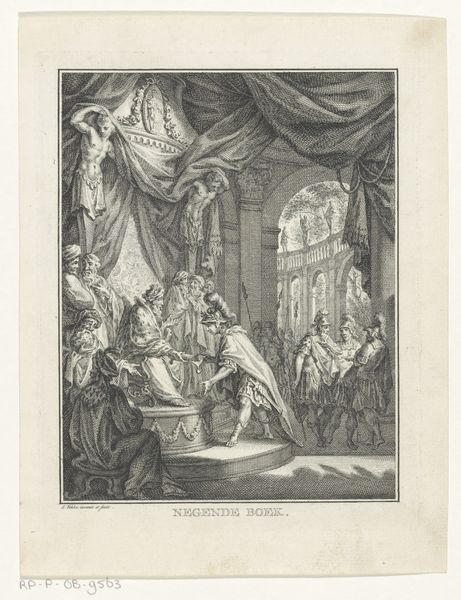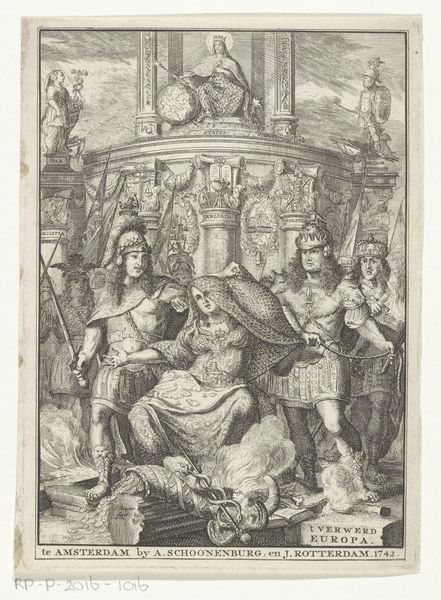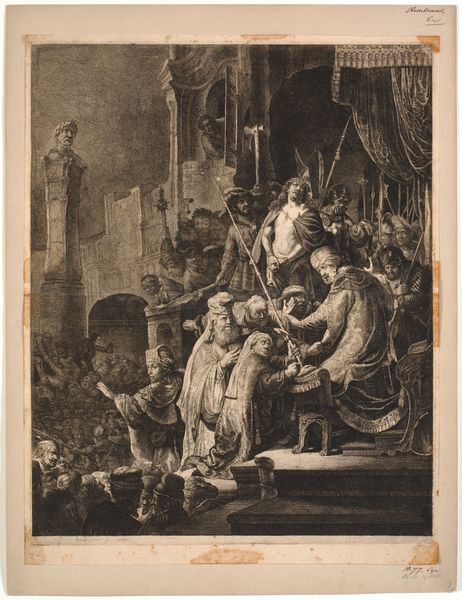
Dimensions: height 300 mm, width 217 mm
Copyright: Rijks Museum: Open Domain
Editor: This is "Christus voor Pilatus: grote plaat," or "Christ Before Pilate: large plate" by Georges Malbeste, created sometime between 1775 and 1808. It’s an engraving. It definitely evokes a somber mood… What's your interpretation of this piece? Curator: This engraving transports us to a pivotal historical moment, ripe with complex power dynamics. Think about Pilate's position, caught between Roman authority and the demands of the crowd. Malbeste, working in a period of revolution, consciously or unconsciously portrays how easily justice can be manipulated by social pressure and political expediency. Editor: So you see it as a commentary on power? Curator: Absolutely. Consider how Christ, despite his apparent innocence, is subjected to this spectacle. Who truly holds the power in this scene? Is it Pilate, who has the authority to condemn, or the crowd, whose desires dictate his actions? This work, viewed through a contemporary lens, speaks to the ways in which systems of power often fail the marginalized, especially how societal expectations are used to coerce unjust verdicts, something still prevalent today in biased trials. Editor: That’s a compelling point about the manipulation of justice. I hadn't considered the relevance to contemporary issues. Curator: Art allows us to interrogate those past structures and learn from those who paved the way. It reveals how timeless some of these struggles really are, offering ways to reflect on progress and contemplate the status quo. This connects seemingly distant historical narratives to ongoing battles for social change. Editor: Thanks for shining a light on all those angles. Curator: Thank you for providing fresh questions to help dissect and reflect.
Comments
No comments
Be the first to comment and join the conversation on the ultimate creative platform.
